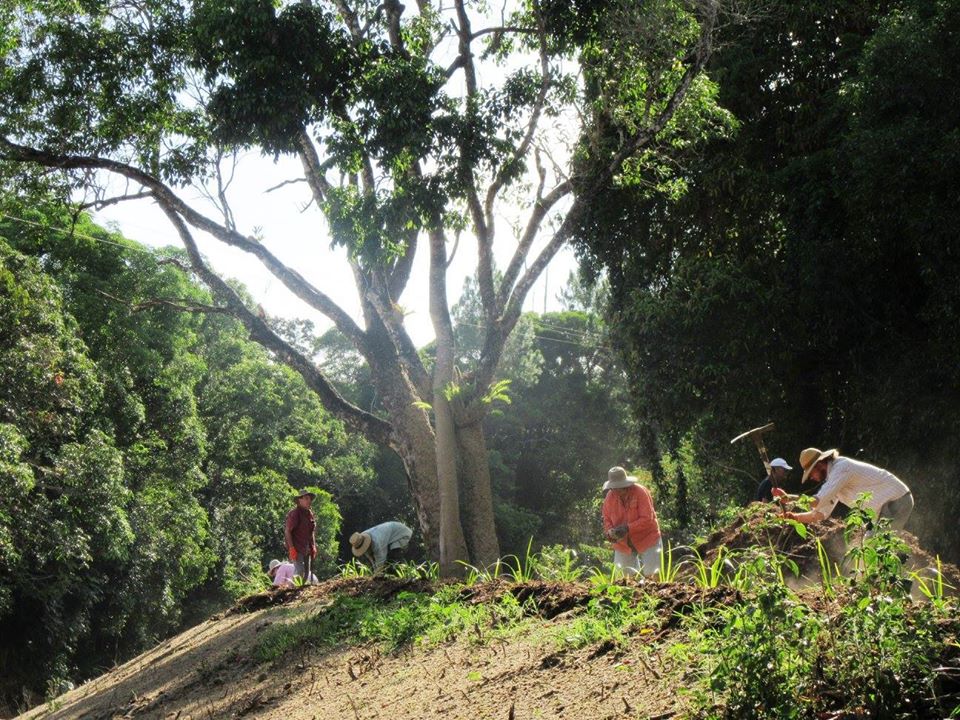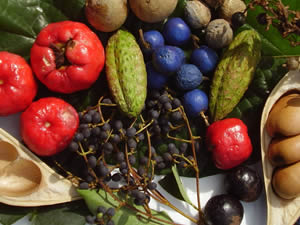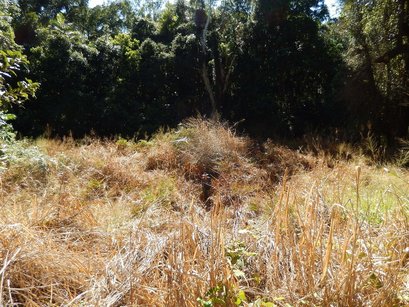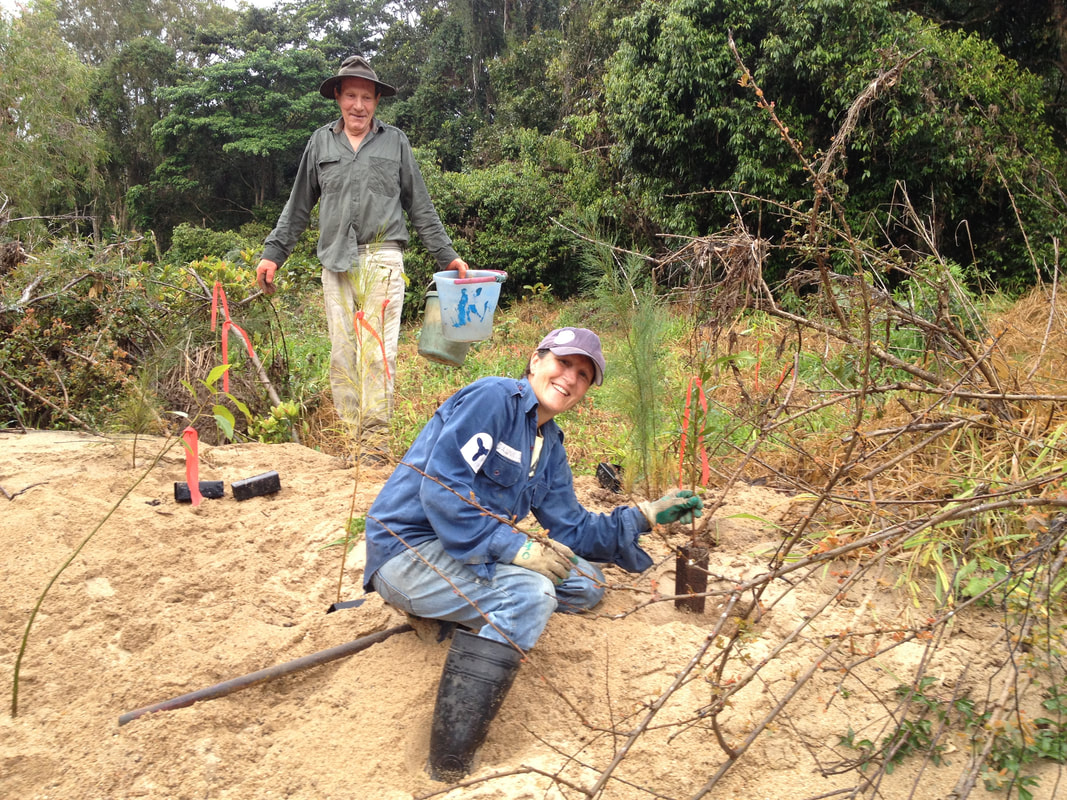Connecting Corridors along the Barron River - Envriolink to Fairyland Corridors
|
What is the process?
|
Case Study
A Case Study outlining the process of the Connecting Corridors project has been developed for the Queensland Agricultural Training College and can be downloaded here
|
Your browser does not support viewing this document. Click here to download the document.
|
Seed - Nursery - Site Preparation - Planting - Maintenance
Seed
Nursery
Local native rainforest seeds will be propagated in our community nursery. |
Site Preparation
Site prep involves the removal of live weeds either via spraying or physical removal from site. Generally guinea grass and lantana infested sites are sprayed lightly and the grass left to decay over a 6 month period to form a mat of mulch. This makes for excellent plant establishment.
|
Planting
Trees planted at 1.5m intervals on our Saturday planting mornings by volunteers ensures that we get a canopy cover within 2.5 to 3 years thus reducing significantly the amount of weed control maintenance required. We use the maximum diversity framework species as outlined in "Repairing the Rainforest" book by Goosem and Tucker to ensure that the correct species are planted in the right place to ensure fastest canopy closure. |
Maintenance
The site will be maintained to eliminate competing weeds until canopy cover is reached. Community engagement to promote owner revegetation on private land in wildlife corridors will be undertaken. |
What will be achieved?
This project will connect a completed 14 year project (revegetation of the regional priority Envirolink Wildlife Corridor intersection with the Barron River linking the north and south sections of the Wet Tropics World Heritage Area with completed revegetation of the area around Warril Creek, which in turn connects to the Fairyland Link Wildlife Corridor, a nationally important biodiversity hotspot with three endangered species. The Myola area centred on Warril Creek is a nationally recognised biodiversity hotspot and site for species recovery.
|
Other Projects
|
|
|





